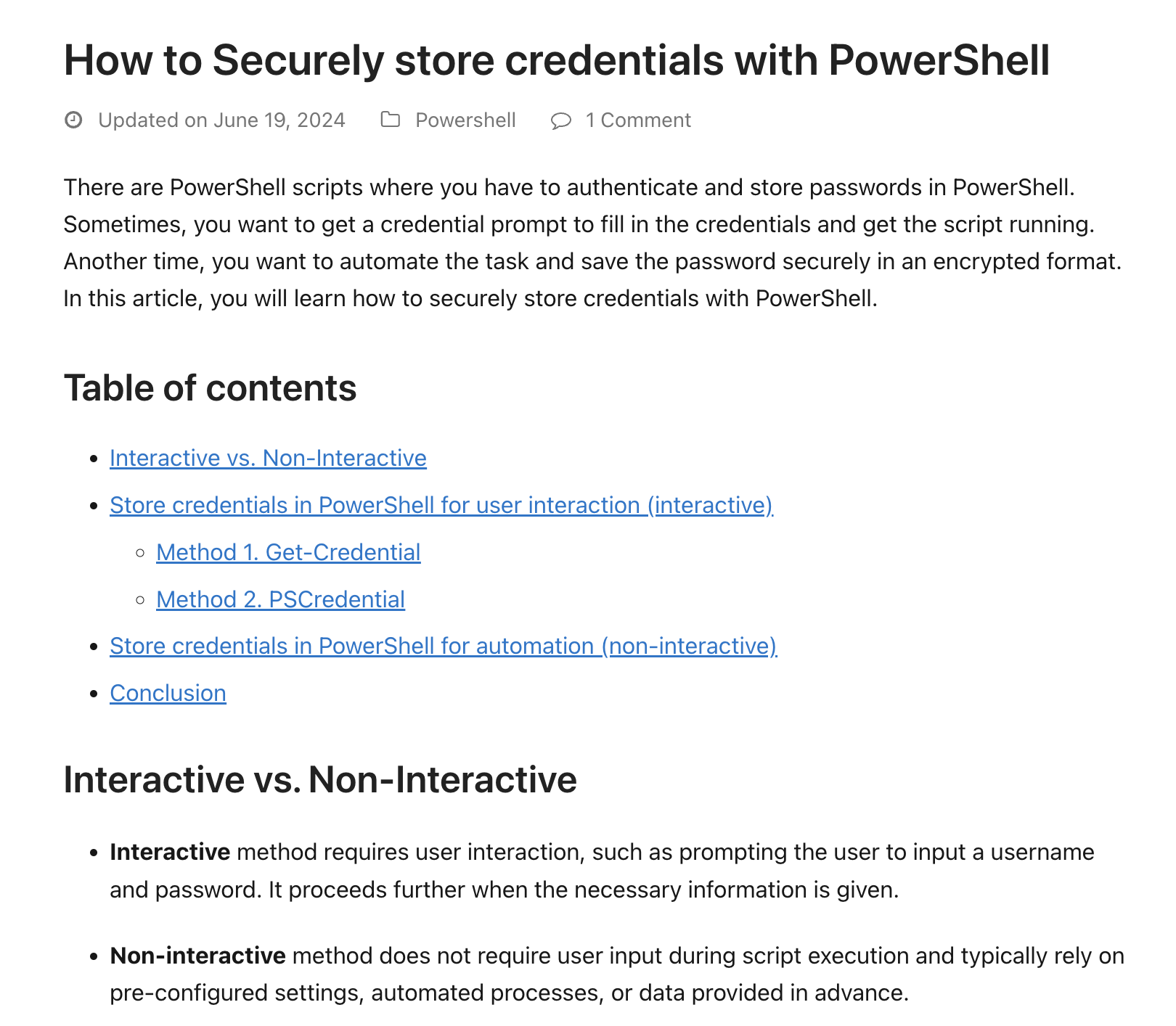
Secure Your Credentials in PowerShell: Expert Tips
Explore Powershell Credential Storage: Secure & Efficient Methods Revealed!
Key insights

- Interactive methods in PowerShell require user interaction for credential input, while non-interactive methods do not.
- For interactive use, PowerShell offers Get-Credential and PSCredential cmdlets to securely store credentials in a variable.
- The secure string feature ensures that passwords are not displayed in plain text in the output.
- For automation, credentials can be stored and retrieved from an encrypted XML file using the Export-CliXml and Import-CliXml
cmdlets. - Always ensure that stored credentials are encrypted to prevent misuse and enhance security.
Storing Credentials in PowerShell
PowerShell provides robust mechanisms for secure credential storage, catering to both interactive and automated script executions. Managing credentials safely is crucial in scripting to maintain security and operational integrity. Whether it's through user prompts for entering credentials during an interactive session or automating credential loading for scheduled tasks, PowerShell offers methods such as Get-Credential, PSCredential, and secure XML storage to handle sensitive information securely. With increased reliance on automated processes, secure handling of credentials in scripts is more critical than ever.
Storing credentials in PowerShell offers two main methods depending on user interaction: Interactive and Non-Interactive. The interactive method needs direct input from the user for username and password. This input triggers the subsequent steps in the PowerShell script.
In contrast, the non-interactive method pre-configures settings or uses automated processes which do not require live user input. For security, it is crucial that passwords are always encrypted and never stored or transmitted in plain text.
- Interactive mode prompts for user credentials.
- Non-interactive mode utilizes pre-stored credentials for script automation.
Utilizing the Get-Credential command, users can store their credentials into the $Creds variable. This command is essential for both methods as it secures credentials effectively. It is followed by storing these credentials into an encrypted XML file using Export-CliXml, which ensures that credentials are securely bound to the user's account and encrypted by Windows Data Protection API.
For interactive sessions, credentials are input each time the script runs, helping in scenarios where the user is present to input their details. For automation, such as scheduled tasks, the secure XML storage method is preferable, ensuring that credentials are loaded seamlessly each time the script is executed.
This secure handling of credentials within PowerShell is vital for maintaining data security and preventing unauthorized access in both manual and automated environments. Always ensure that the secure methods discussed are correctly implemented to protect sensitive data.
Secure Credential Storage in PowerShell
In today's cybersecurity-conscious environment, securely handling credentials within PowerShell scripts is imperative. Whether the script is run interactively or in an automated fashion, the method of storing credentials securely revolves around key PowerShell commands. These include Get-Credential for retrieving user credentials and Export-CliXml for securely saving these credentials. Using these tools, PowerShell offers robust solutions for managing credentials securely, thus enhancing overall system security.
Read the full article How to Securely store credentials with PowerShell

People also ask
How to securely store credentials?
A step-by-step guide on securing your passwords is advisable for effective credential management.
How to manage credentials in PowerShell?
An effective approach to handling credentials in PowerShell is essential for secure management.
Where are PowerShell credentials stored?
In PowerShell, credentials are contained within a PSCredential object, with the password secured as a SecureString. For further understanding of SecureString's protection capabilities, consider exploring the topic 'How secure is SecureString?'.
How to use SecureString in PowerShell?
To craft a secure string directly from input at the command line, utilize the AsSecureString parameter of the Read-Host cmdlet. When employing the Key or SecureKey parameters to define a key, ensure the accuracy of the key's length. For instance, a 128-bit key should be presented as a byte array consisting of 16 decimal numbers.
Keywords
PowerShell secure credentials, store credentials PowerShell, encrypt credentials PowerShell, manage passwords PowerShell, PowerShell secrets management, secure storage PowerShell, PowerShell credential management, PowerShell security best practices